“The virulence of Omicron is close to that of seasonal influenza” and “Omicron is significantly less pathogenic than Delta”. …… Recently, a lot of news about the virulence of the new crown mutant strain Omicron has been spreading on the internet.
Indeed, since the emergence of the Omicron mutant strain in November 2021 and its global prevalence, research and discussion on virulence and transmission have continued unabated. What is the current virulence profile of Omicron? What does the research say about it?
Various laboratory studies: Omicron is less virulent
In fact, as early as January 2022, a study from The University of Hong Kong Li Ka Shing Faculty of Medicine found that Omicron (B.1.1.529) may be less pathogenic compared to the original strain and other mutant strains.
It was found that the Omicron mutant strain was inefficient in using transmembrane serine protease (TMPRSS2), while TMPRSS2 could facilitate viral invasion of host cells by cleaving the spike protein of the new coronavirus. At the same time, the researchers observed that Omicron replication was significantly reduced in the human cell lines Calu3 and Caco2.
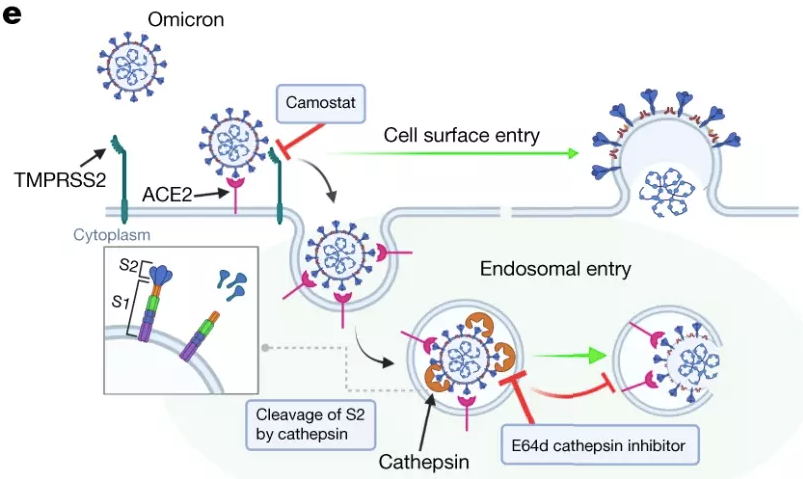
Image source internet
In the k18-hACE2 mouse model, Omicron replication was reduced in both the upper and lower respiratory tracts of mice compared to the original strain and the Delta mutant, and its pulmonary pathology was less severe, while Omicron infection caused less weight loss and mortality than the original strain and the Alpha, Beta and Delta mutants.
Therefore, the researchers concluded that Omicron replication and pathogenicity were reduced in mice.
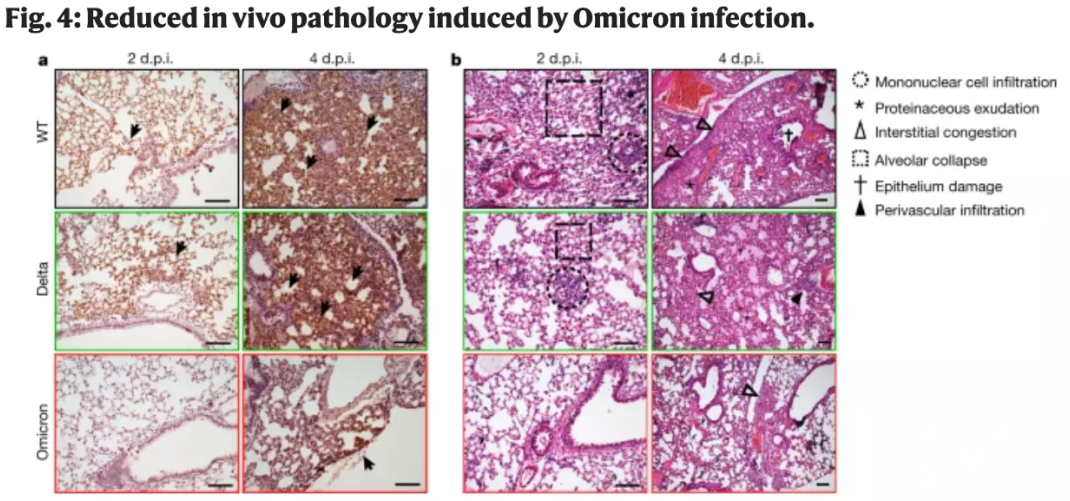
Image source internet
On 16 May 2022, Nature published a paper by Yoshihiro Kawaoka, a leading virologist from the University of Tokyo and the University of Wisconsin, confirming for the first time in an animal model that Omicron BA.2 is indeed less virulent than the previous original strain.
The researchers selected live BA.2 viruses isolated in Japan to infect k18-hACE2 mice and hamsters and found that, after infection with the same dose of virus, both BA.2 and BA.1 infected mice had significantly lower virus titres in the lungs and nose than the original New Crown strain infection (p<0.0001).
This gold standard result confirms that Omicron is indeed less virulent than the original wild type. In contrast, there was no significant difference in viral titres in the lungs and noses of the animal models following BA.2 and BA.1 infections.
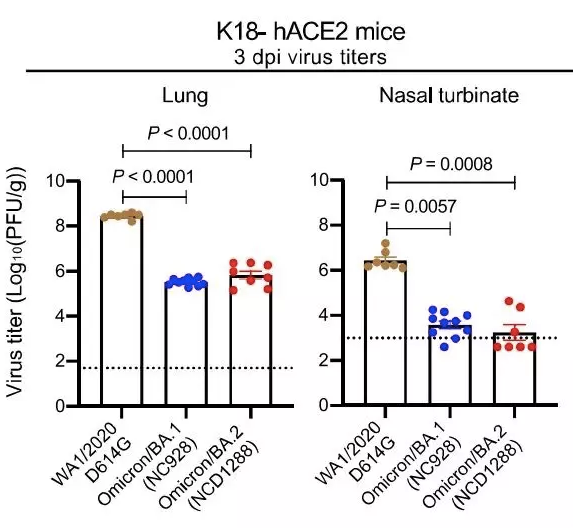
Image source internet
PCR viral load assays showed that both BA.2 and BA.1 infected mice had lower viral loads in the lungs and nose than the original New Crown strain, particularly in the lungs (p<0.0001).
Similar to the results in mice, the viral titres detected in the nose and lungs of BA.2 and BA.1 infected hamsters were lower than the original strain after ‘inoculation’ with the same dose of virus, particularly in the lungs, and slightly lower in the nose of BA.2 infected hamsters than BA.1 – in fact, half of the BA.2 infected hamsters did not develop lung infection.
It was further found that the original strains, BA.2 and BA.1, lacked cross-neutralisation of sera following infection – consistent with what has been observed in real-world humans when infected with different new crown mutants.
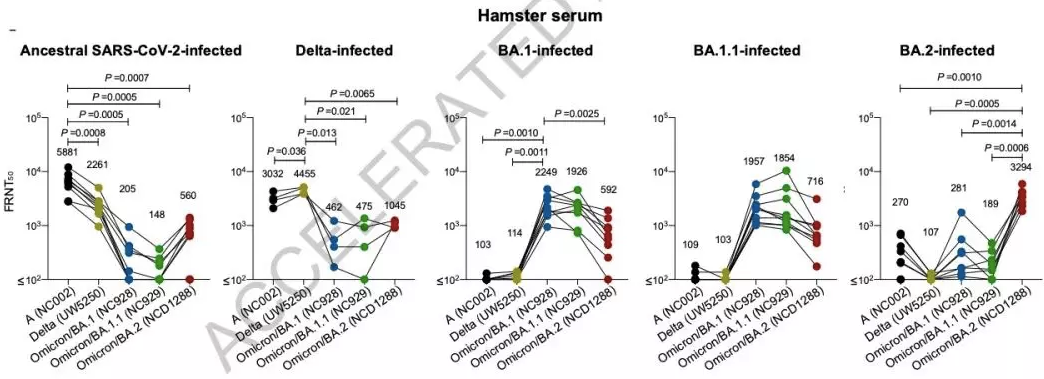
Image source internet
Real-world data: Omicron is less likely to cause serious illness
Several of the above studies have described the reduced virulence of Omicron in laboratory animal models, but is the same true in the real world?
On 7 June 2022, WHO published a report assessing the difference in severity of people infected during the Omicron (B.1.1.529) epidemic compared to the Delta pandemic.
The report included 16,749 new coronary inpatients from all provinces of South Africa, including 16,749 from the Delta epidemic (2021/8/2 to 2021/10/3) and 17,693 from the Omicron epidemic (2021/11/15 to 2022/2/16). The patients were also classified as severe, serious and non-serious.
critical: having received invasive ventilation, or oxygen and high-flow transnasal oxygen, or extracorporeal membrane oxygenation (ECMO), or admission to the ICU during hospitalisation.
-severe (severe): received oxygen during hospitalization
-non-severe: if none of the above conditions are met, the patient is non-severe.
The data showed that in the Delta group, 49.2% were serious, 7.7% were critical and 28% of all hospitalised Delta infected patients died, while in the Omicron group, 28.1% were serious, 3.7% were critical and 15% of all hospitalised Omicron infected patients died. Also, the median length of stay was 7 days in the Delta group compared to 6 days in the Omicron group.
In addition, the report analysed the influencing factors of age, gender, vaccination status and comorbidities and concluded that Omicron (B.1.1.529) was associated with a lower probability of serious and critical illness (95% CI: 0.41 to 0.46; p<0.001) and a lower risk of in-hospital death (95% CI: 0.59 to 0.65; p<0.001).
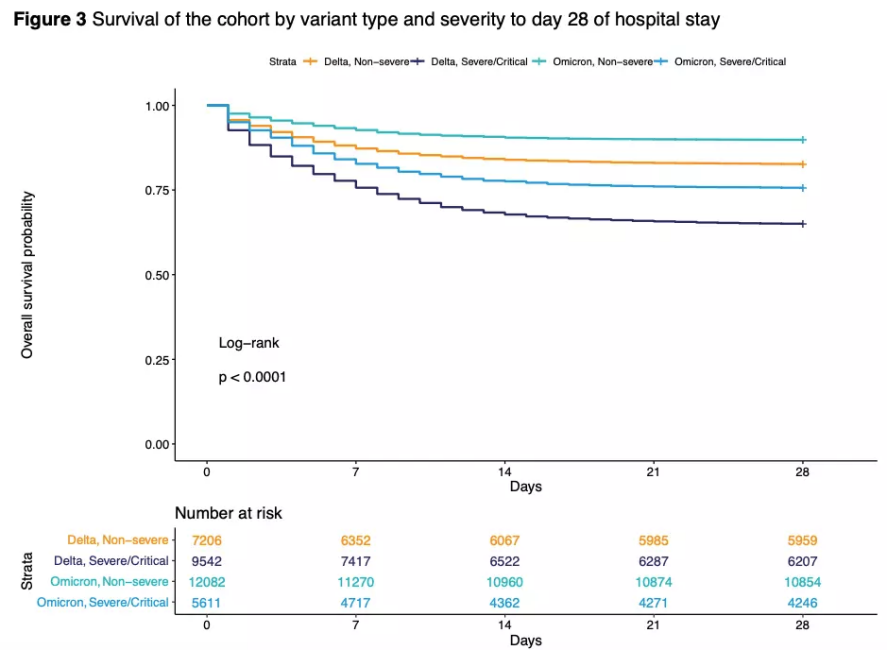
Image source internet
For the different subtypes of Omicron, further studies have also analysed their virulence in detail.
A cohort study from New England analysed 20770 cases of Delta, 52605 cases of Omicron B.1.1.529 and 29840 cases of Omicron BA.2, and found that the proportion of deaths was 0.7% for Delta, 0.4% for B.1.1.529 and 0.3% for BA.2. After adjusting for confounding factors, the study concluded that the risk of death was significantly lower for BA.2 compared to both Delta and B.1.1.529.

Image source internet
Another study from South Africa assessed the risk of hospitalisation and the risk of severe outcome for Delta, BA.1, BA.2 and BA.4/BA.5. The results showed that of the 98,710 newly infected patients included in the analysis, 3825 (3.9%) were admitted to hospital, of whom 1276 (33.4%) developed severe disease.
Among those infected with the different mutations, 57.7% of Delta-infected patients developed severe disease (97/168), compared to 33.7% of BA.1-infected patients (990/2940), 26.2% of BA.2 (167/637) and 27.5% of BA.4/BA.5 (22/80). Multivariate analysis showed that the probability of developing a serious disease among those infected Delta > BA.1 > BA.2, while the probability of developing a serious disease among those infected BA.4/BA.5 was not significantly different compared to BA.2.
Reduced virulence, but vigilance needed
Laboratory studies and real data from several countries have shown that Omicron and its subtypes are less virulent and less likely to cause serious illness than the original strain and other mutant strains.
However, a review article in the January 2022 issue of The Lancet, entitled ‘Milder but not mild’, noted that although Omicron infection accounted for 21% of hospital admissions in the younger South African population, the proportion of outbreaks causing severe disease was likely to increase in populations with different levels of infection and different levels of vaccination. (Nonetheless, in this generally young South African population, 21% of hospitalised patients infected with the SARS-CoV-2 omicron variant had a severe clinical oucome, a proportion that might increase and cause substantial impact during outbreaks in populations with different demographics and lower levels of infection-derived or vaccine-derived immunity.)
At the end of the aforementioned WHO report, the team noted that despite the reduced virulence of the previous strain, nearly a third of the hospitalized Omicron (B.1.1.529) patients developed severe disease, and that the various new crown mutants continued to cause high morbidity and mortality in the elderly, immunocompromised or unvaccinated populations. (We would also like to caution that our analysis should not be seen as supportive of the ‘mild’ variant narrative. Nearly a third of the hospitalized Omicron patients developed severe disease and 15% died; numbers which are not insignificant……Among vulnerable populations, i.e. patients at the extremes of age, in populations with high comorbid burden, in frail patients and among the unvaccinated, COVID-19 (all VOCs) continues to contribute to substantial morbidity and mortality.)
Previous data from Omicron when it triggered the fifth wave of the pandemic in Hong Kong showed that as of 4 May 2022, there were 9115 deaths out of 1192765 newly crowned cases during the fifth wave (a crude mortality rate of 0.76%) and a crude mortality rate of 2.70% for people over 60 years of age (about 19.30% of this age group were unvaccinated).
In contrast, only 2% of New Zealanders over 60 years of age are unvaccinated, which is highly correlated with a low crude mortality rate of 0.07% for the new crown epidemic.
On the other hand, while it is often argued that Newcastle may become a seasonal, endemic disease in the future, there are academic experts who take a different view.
Three scientists from the University of Oxford and the European Union Joint Research Centre believe that the lower severity of Omicron may simply be a coincidence, and that continued rapid antigenic evolution (antigenic evolution) may bring about new variants.
Unlike immune escape and transmissibility, which are subject to strong evolutionary pressure, virulence is usually just a ‘by-product’ of evolution. Viruses evolve to maximise their ability to spread, and this may also lead to an increase in virulence. For example, by increasing viral load to facilitate transmission, it can still cause more severe disease.
Not only that, but virulence will also cause very limited harm during the spread of a virus if the symptoms brought on by the virus appear mainly later in the infection – as in the case of influenza viruses, HIV and hepatitis C viruses, to name a few, which have plenty of time to spread before causing serious consequences.
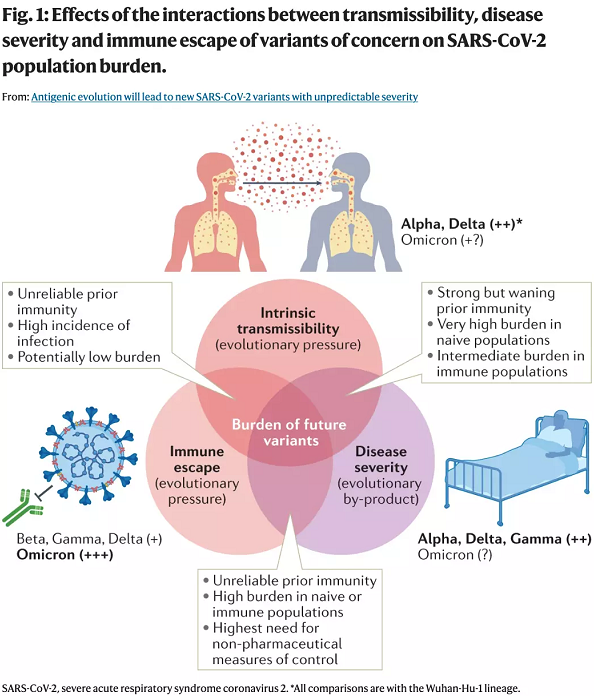
Image source internet
In such circumstances, it may be difficult to predict the trend of the new crown mutant strain from the lower virulence of Omicron, but the good news is that the new crown vaccine has demonstrated a reduced risk of severe illness and death against all mutant strains, and aggressively increasing population vaccination rates remains an important way to combat the epidemic at this stage.
Acknowledgements: This article was professionally reviewed by Panpan Zhou, PhD, Tsinghua University School of Medicine and Postdoctoral Fellow, Scripps Research Institute, USA
Omicron self-testing antigen reagent at home
Post time: Dec-08-2022
 中文网站
中文网站
